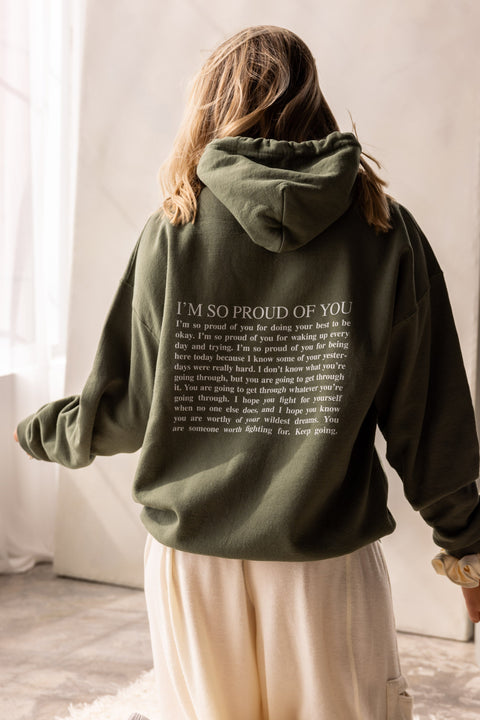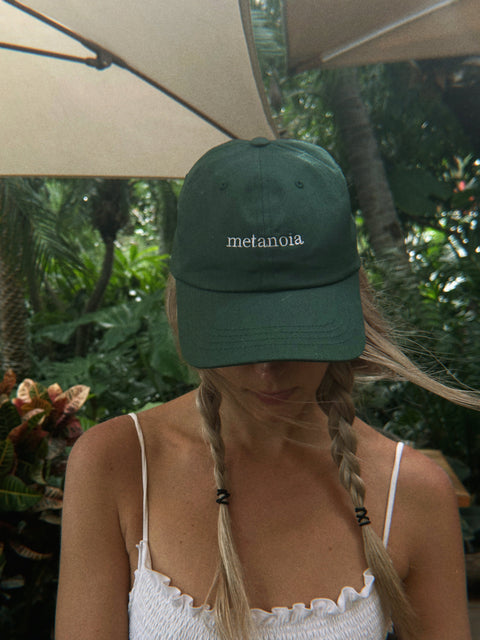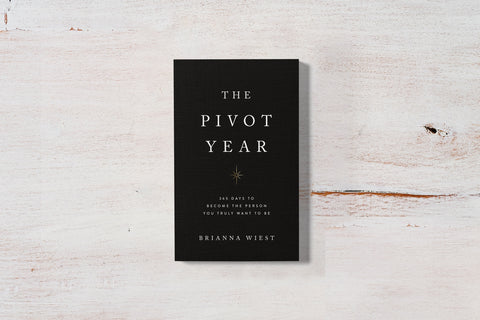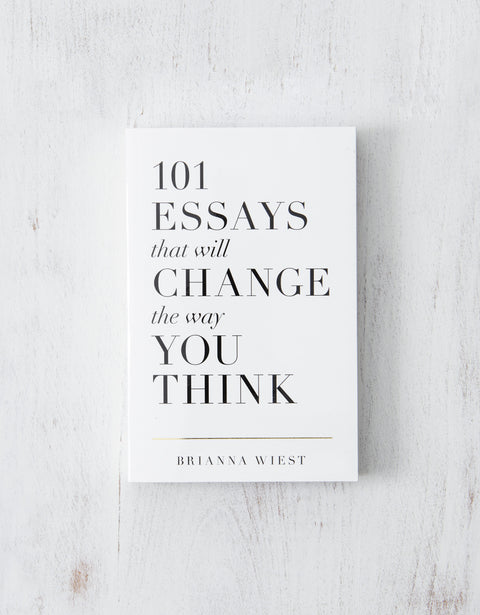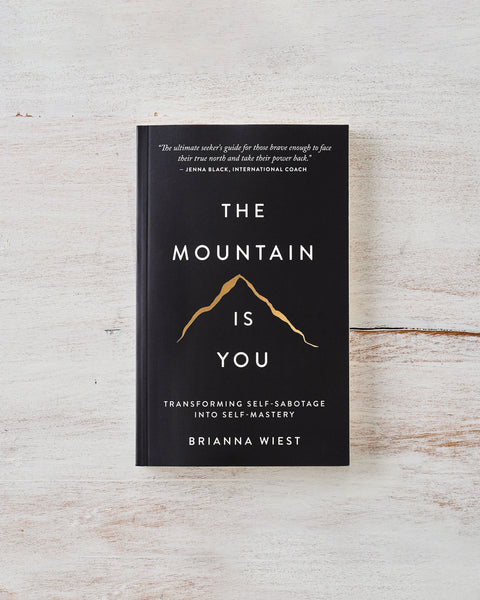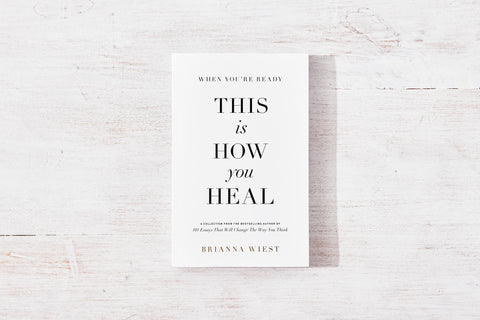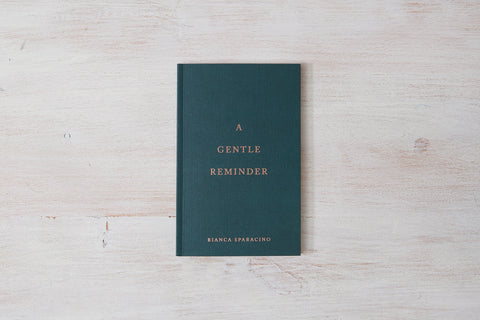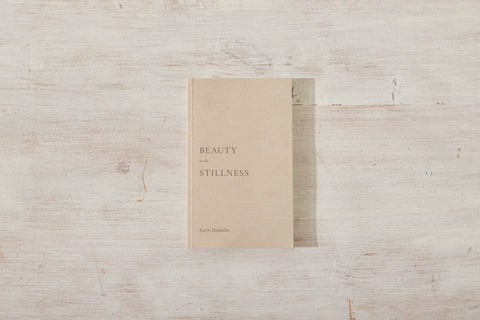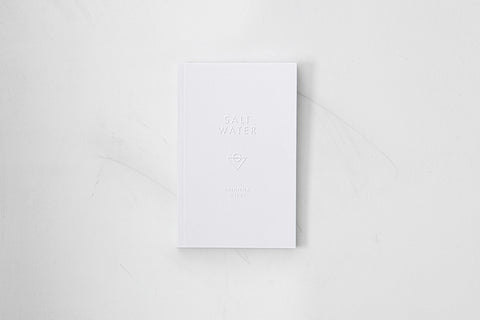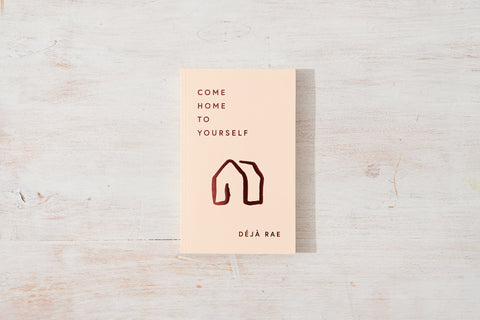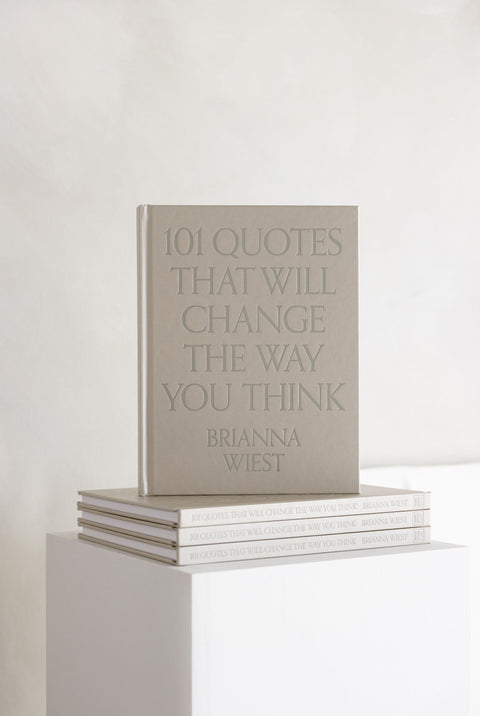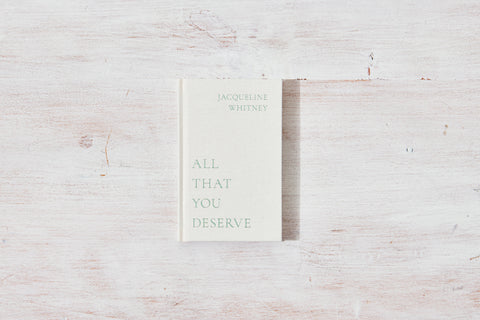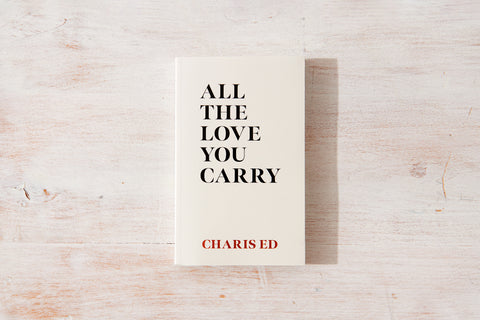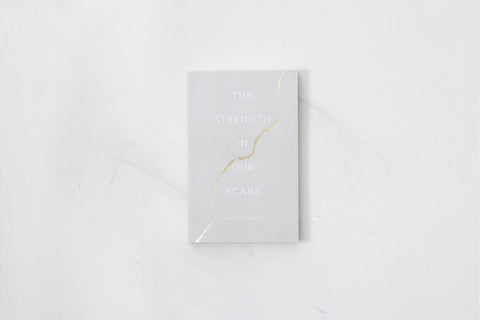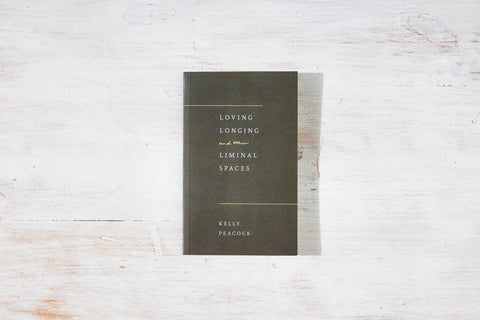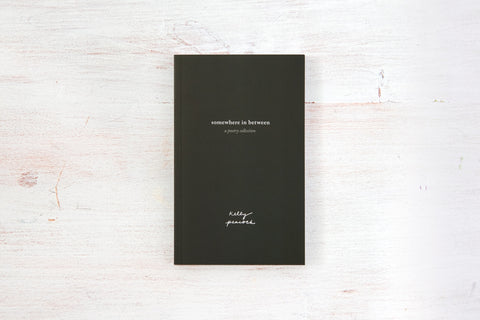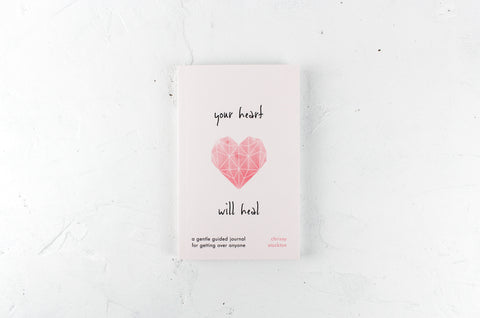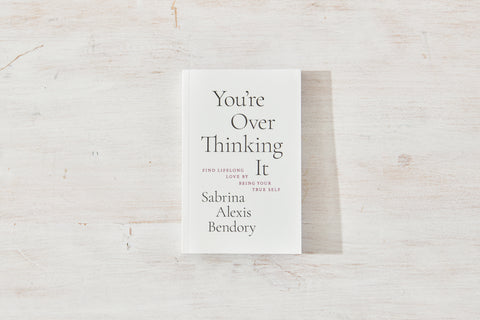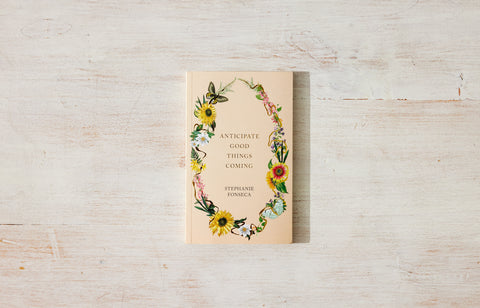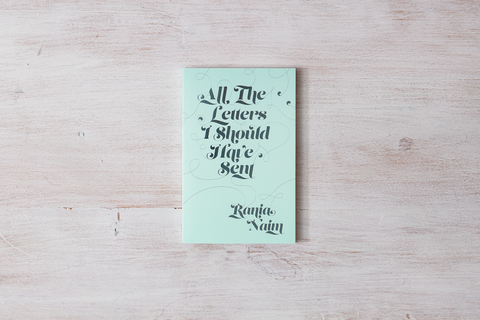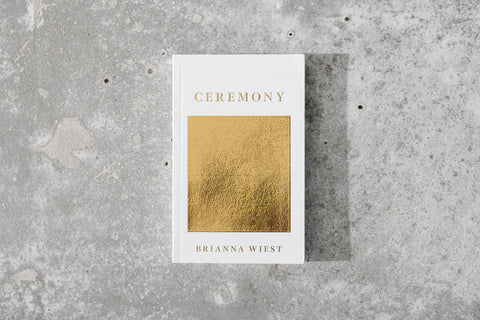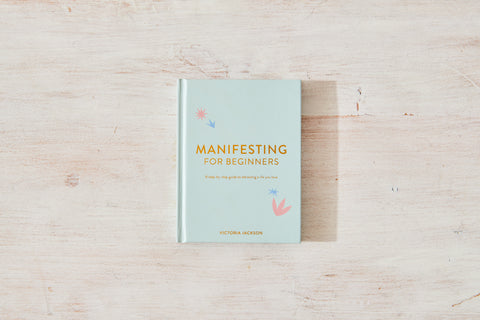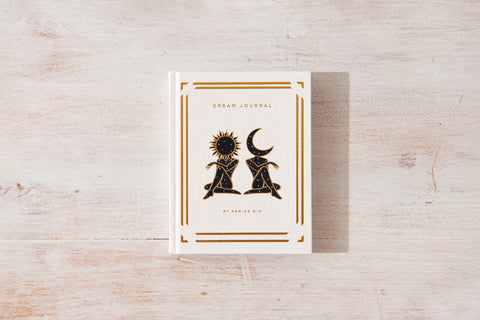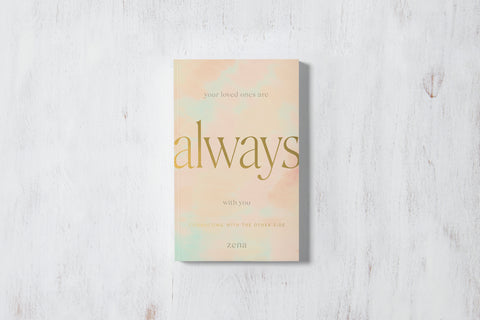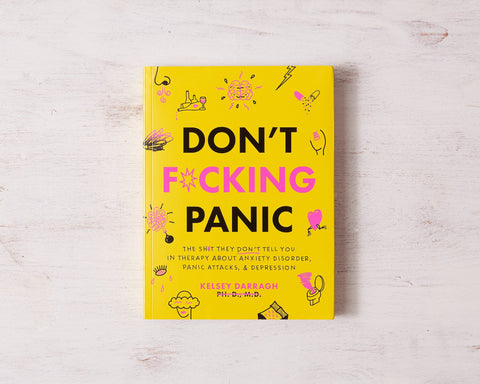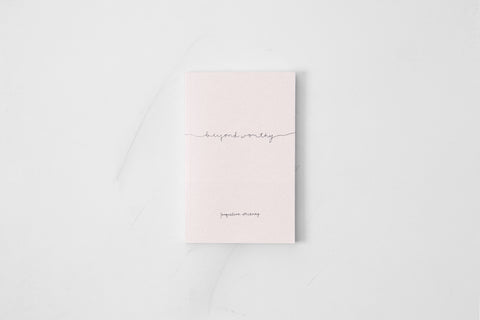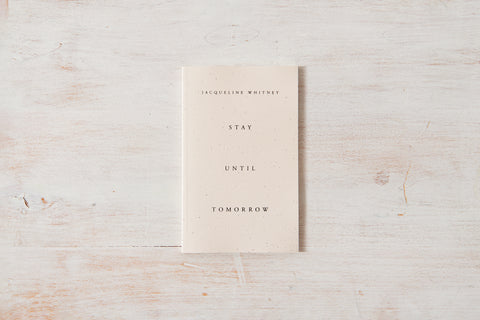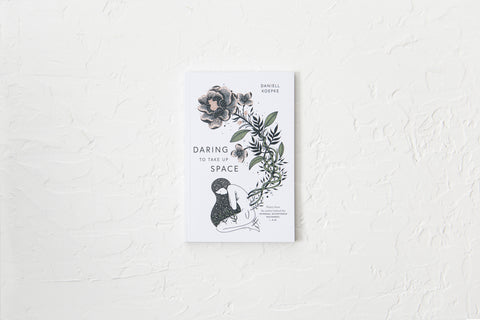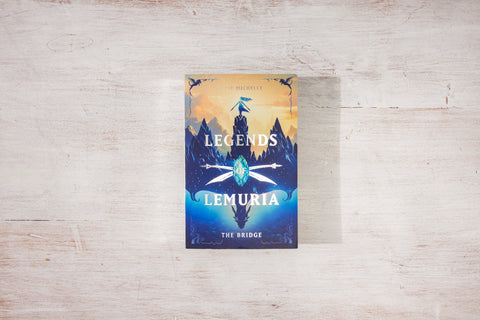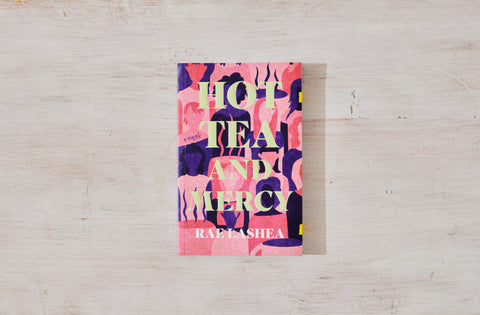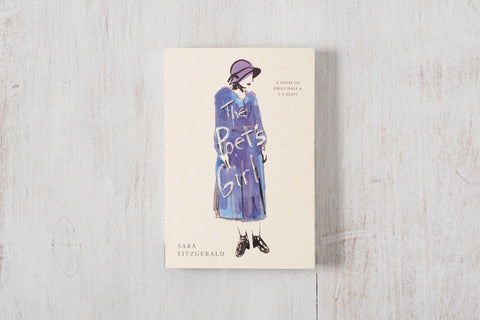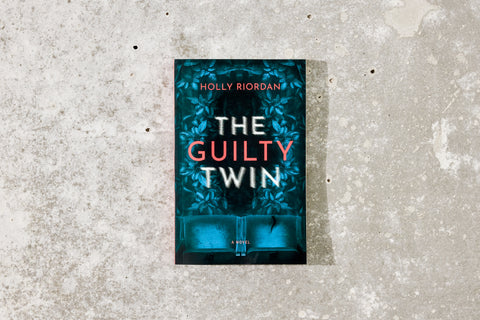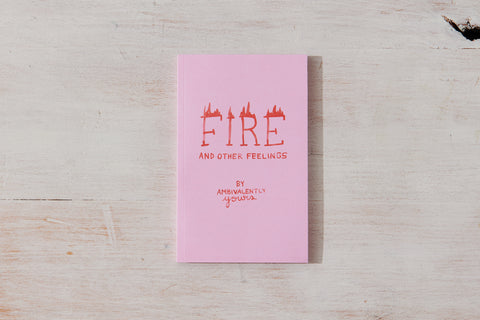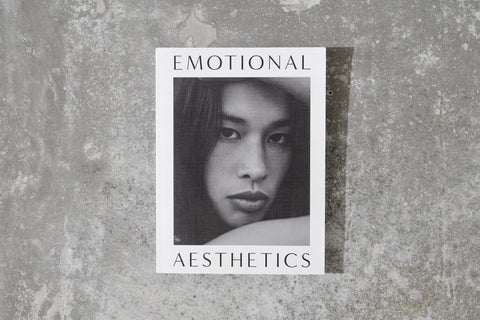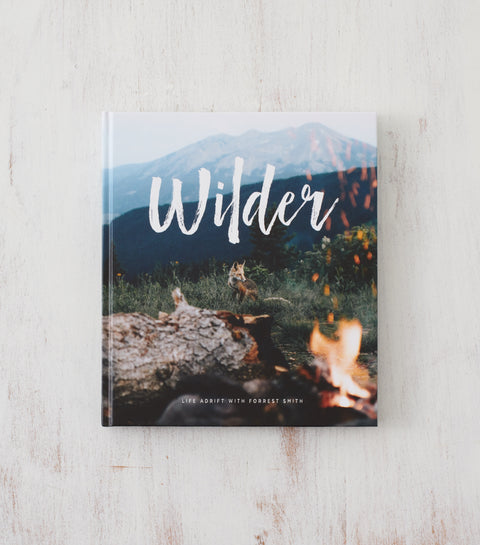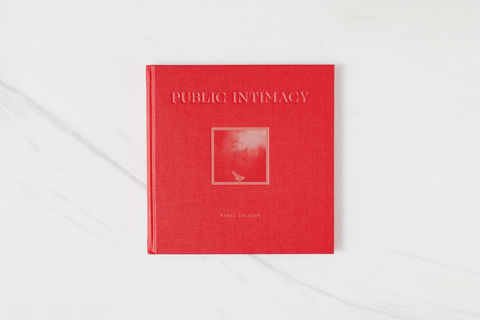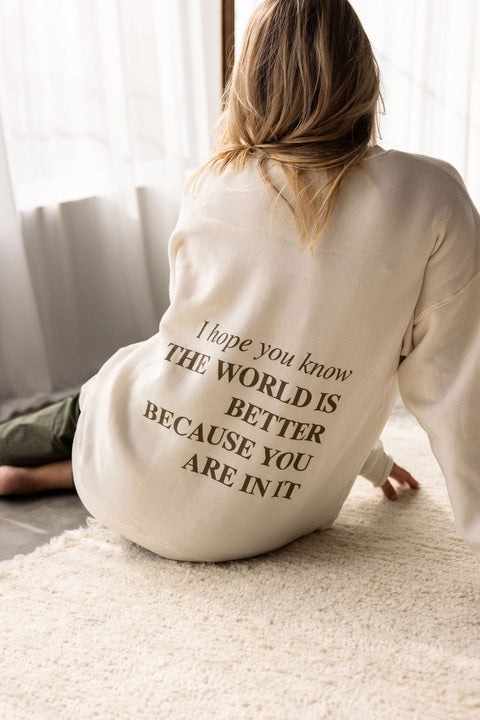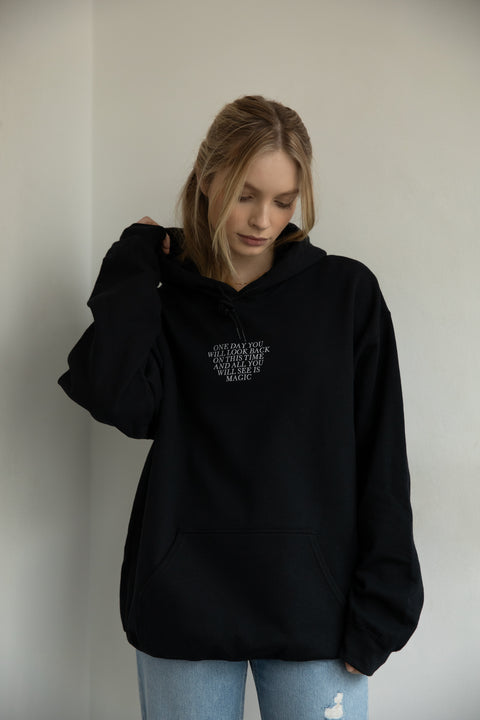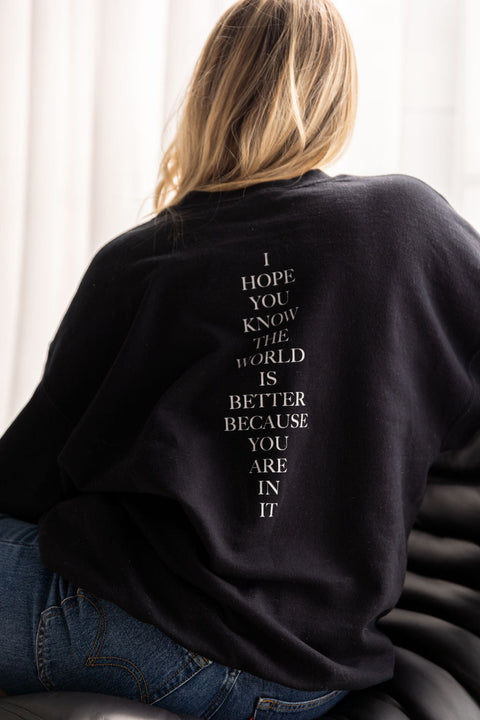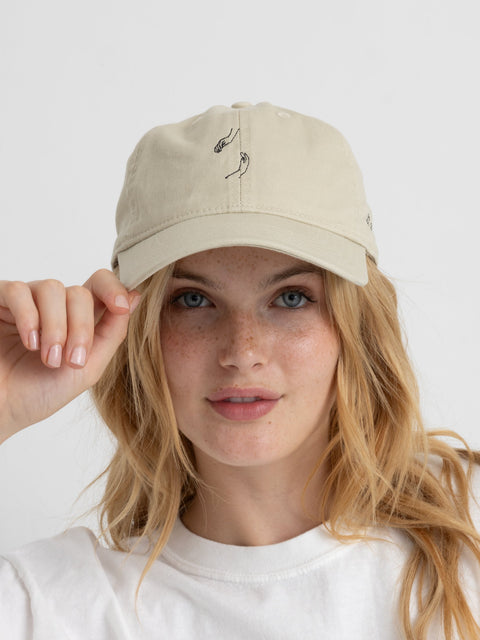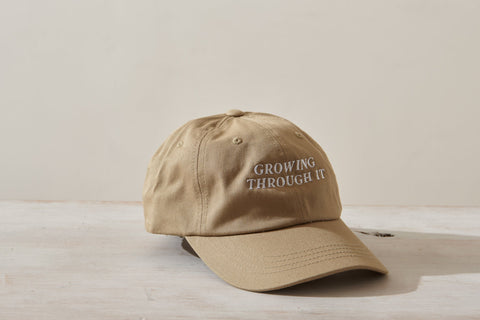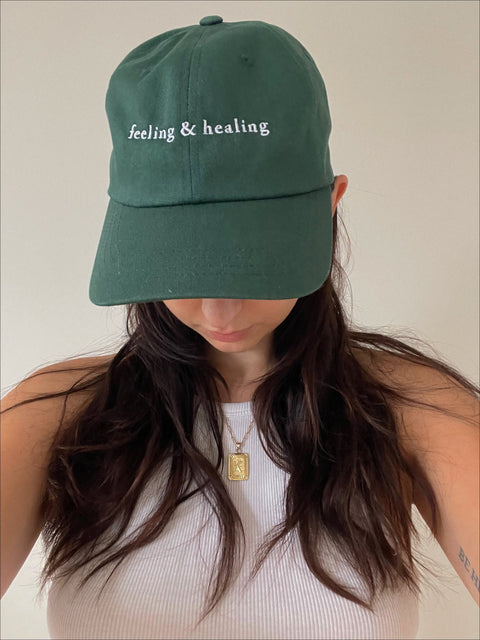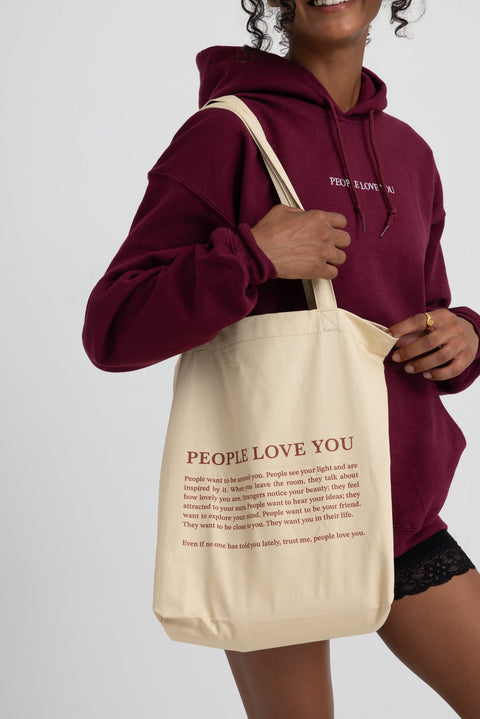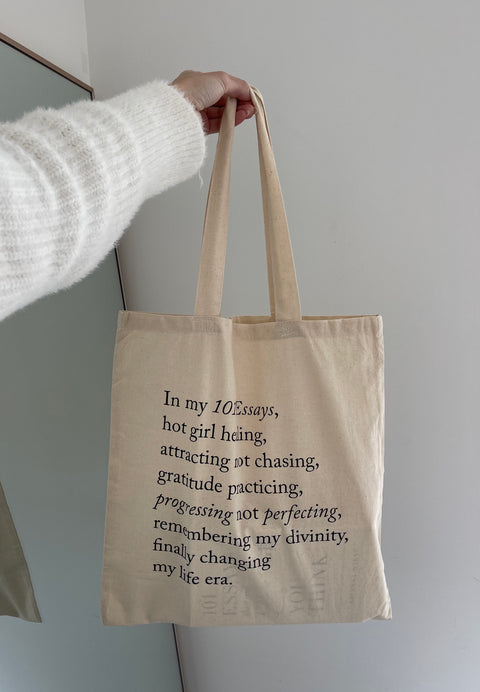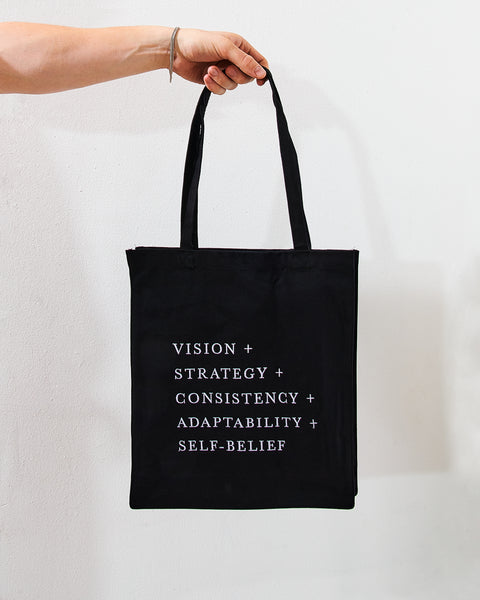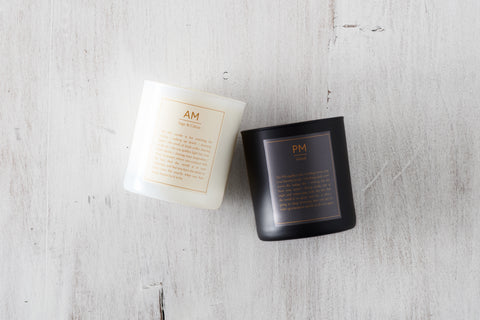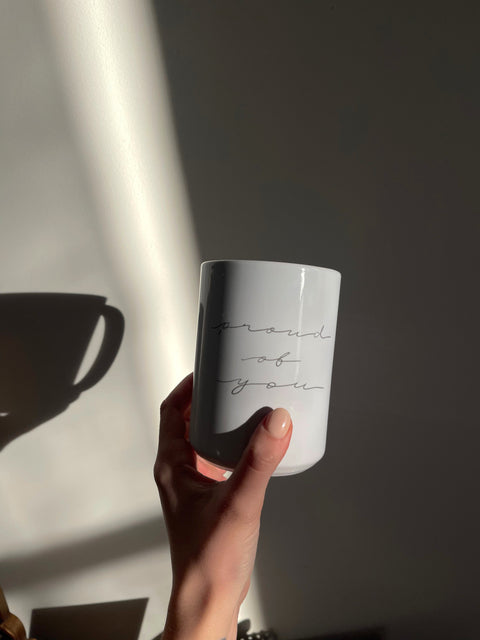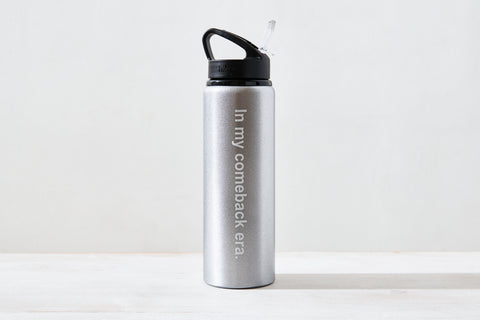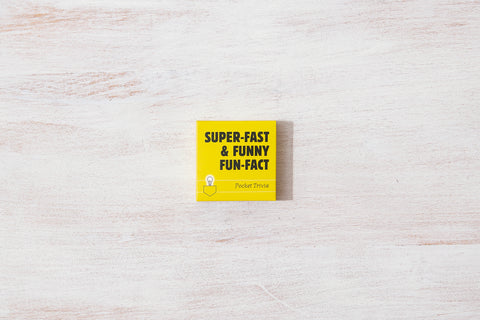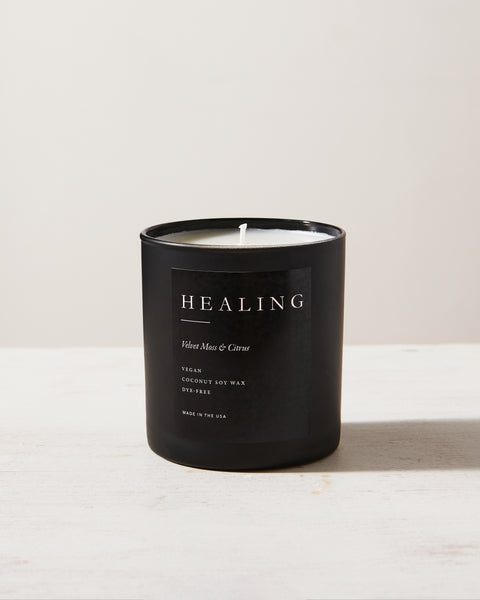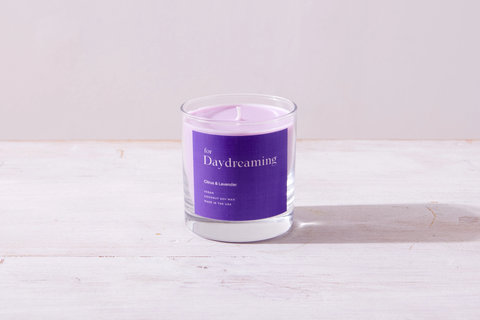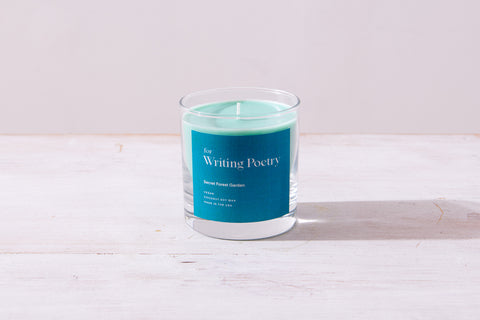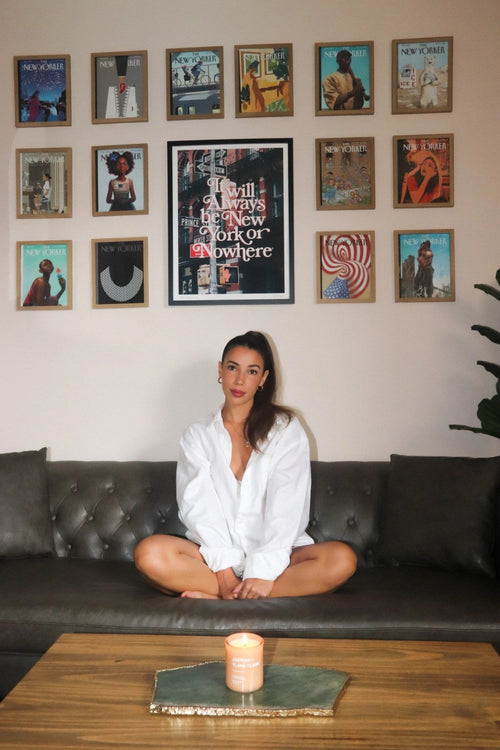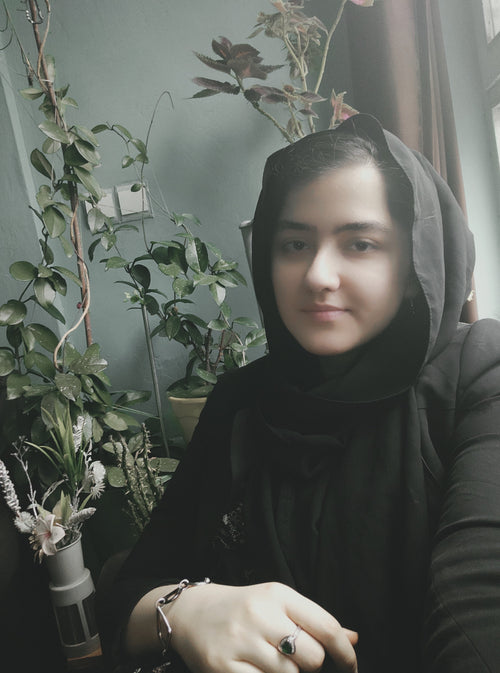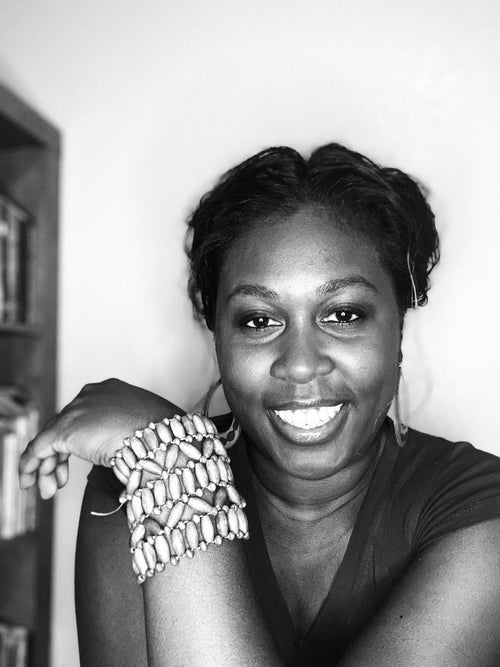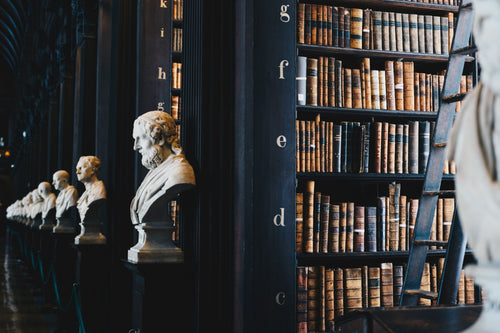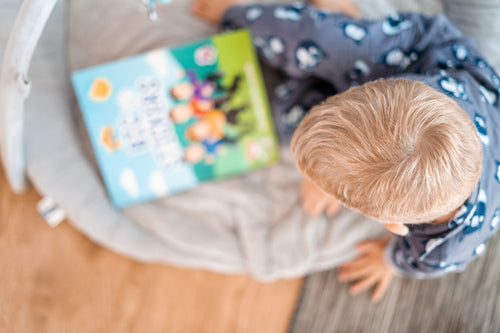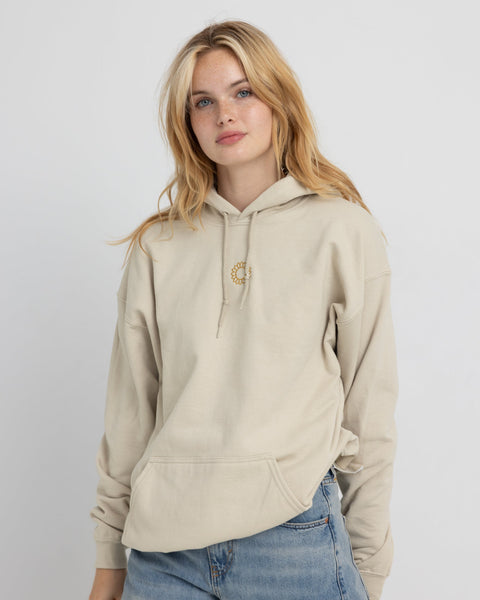Author & Artist, Ambivalently Yours On Being Vulnerable, Finding Connection, & Getting Creative
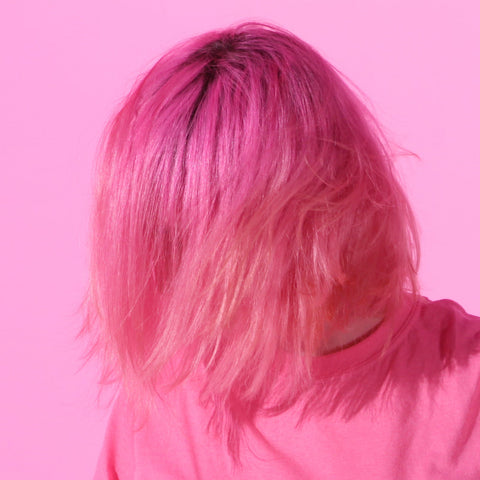

Katee: Hi everybody! Hello Ambivalently Yours!
AY: Hello!
Katee: So excited to get started today! To start out I kind of just want to hear more about your background. So maybe talking a little bit about your artist persona and about your choice to remain anonymous as an artist and what that means to you.
AY: So basically, I started doing work as Ambivalently Yours in about 2012. AY was like my art school “project,” and at the time, I wanted to explore a lot of things through my art that were personal and political, and I was a little bit afraid of doing that, so I thought it would be fun to start doing it anonymously. It was in the days of Tumblr when a lot of people were kind of doing things anonymously, and to be honest I didn’t really think it would become my career, but here we are, and I decided to just stick with the anonymous persona because it makes me a bit braver on the internet.
Katee: Yeah, definitely, putting yourself in the public eye is kind of a crazy concept.
AY: Yeah and especially because my art is very personal and emotional it’s good for me to have a little bit of a safety net between what I share online and my personal life, because it just sort of makes it so that my art isn’t too vulnerable for me.
Katee: I love that, I think as a creator it’s really hard to put ourselves out there and be vulnerable publicly speaking, even if we’re okay with it on a more intimate level, so I think that’s really beautiful. Another aspect of your persona per se is this focus around the color pink–we see it all throughout your social platforms, we even see it in the background to the drawing you’re doing now, so just wanted to talk through if that was intentional or what that’s linked to and why that color.
AY: Yeah, it’s definitely intentional. I’ve always really loved pink, whether it’s because I love pink because I’ve been conditioned by the patriarchy or I just love it is a toss-up. I remember being in art school there was one teacher in particular who was like, “Enough with the pink already! Try another color!” and that made me want to just go full on with the pink.
Katee: I love it.
AY: And you know, my work focuses a lot on ambivalence and having mixed feelings, and I have a lot of mixed feelings about the color pink, so it was kind of like the perfect color to dive right into.
Katee: Yeah, that’s awesome. When you say mixed feelings about the color pink, why so?
AY: Well, because it does have this association with traditional femininity, I think it makes some people read my work sometimes as very vulnerable or naive. There’s a lot of, like, ‘sensitive but in a bad way,’ and so I kind of hate the association but love the color, so I’m trying to in a way reclaim it and make it my own I guess.
Katee: Yeah I guess we’ll probably touch on this in a little bit, but it’s interesting to think about the associations we make as a society to certain colors or, as we see in your book, elements and the kind of connotations that certain things bring to mind just from a cultural standpoint. That being said, let’s dive into your book Fire And Other Feelings.
*AY presents book*
Katee: Love it! It starts out in this seemingly true story of a town that’s been on fire for 60 years and I just want to use that as a point of talking about where you find inspiration for your work, whether that’s specifically for this collection or in a general sense.
AY: So the town on fire– my partner was reading an article about a town that’s on fire and my brain immediately went to: I should write a story about a person who’s been on fire forever. So I get inspiration from the little things, like an article sparked this inspiration for a whole story, and it kind of went from there. So I had this story in my head, and then when the opportunity for the book came, I was like this is the perfect place to put it together and write my little story about a girl on fire.
Katee: I love it. Wait, so that was a true story about the town that was on fire?
AY: Yeah, I think it’s in Pennsylvania. It’s like a town that’s been on fire forever, and I thought that there was something interesting about that and about how different people reacted to it differently.
Katee: That’s really cool. I guess stemming off of that, then: Once you have that spark of inspiration from wherever you got it from, is it easy for you then to dive into whatever you want to create, or is there a sort of ritual or practice that gets you in the mindset to be creative? Or what does that look like to you?
AY: Yeah, I definitely have to be in the right mood to create. I feel like its a very emotional process for me. Early in my career I worked a 9 to 5 job where I had to be creative during 9 and 5, Monday to Friday, which isn’t always conducive, so I had to find ways to trick my brain, because I’m at my most creative when I’m kind of sad but for no reason.
Katee: I get that.
AY: Like not actually sad about anything, but just kind of melancholy. So there was certain music I could listen to. Early in my career I listened to a lot of Cat Power, and the last few years I listened to a lot of Folklore and Evermore by Taylor Swift because it’s just kind of that kind-of-sad-girl but not like so sad, ya know?
Katee: Yeah, moody, angsty bringing up the emotions.
AY: Exactly, so it’s all about tricking my body and my brain to be in this right mood, and sometimes it doesn’t work and I just need to stop working because, ya know, some days I just can’t draw and it’s really depressing because I have these moments where I’m like, ‘Maybe I lost it,’ but it’s really about being in the right frame of mind.
Katee: Yeah, that’s so interesting, because I think as a creative person it’s almost this expectation we have on ourselves that we should be creative all the time. Kind of speaking to that, what’s your way of getting out of a rut if you feel like you’re in one?
AY: It’s really just stop working and to really just take a break, because I think like you said, especially with social media where you kind of have this pressure to be posting all the time if you want to feed the algorithm, and that’s not how creativity works, and I think like if I’m stuck, the more I try to force it, the worse my art becomes. It’s like taking a break, going for a walk, taking a nap, reading a book, watching TV–doing something else I find really helps.
Katee: Totally. Finding ways to fill the well, as they say.
AY: Exactly.
Katee: When it comes down to literally creating these beautiful pieces of art that we see riddled throughout your collection, what does that process look like to you? I know you’re creating something right now too, so maybe just walking us through what that process looks like.
AY: Yeah so, I’m a little bit old school with my art. I really love still starting everything on paper. So as you see, I start with a little light pencil drawing, then I use these like very cheap ballpoint pens, and then I use watercolor. So this is the cover of the book, and this was the original drawing, so I drew out the font and drew out all of the words inside. Here are some of the other original drawings that are in the book. So it all starts on paper and then I scan everything and edit it in Photoshop. Sometimes I use Procreate a little bit for some of the text, but I still really like the feel of drawing on paper and using watercolor; it’s a bit more relaxing for me.
Katee: Definitely, and you get to physically bring it to life by hand, which I think is really beautiful.
AY: Yeah, and I think each artist has their sort of way that they found their style, and I found my style a lot when I was working in those 9 to 5 jobs, so that’s why I draw with ballpoint pens because I would just draw at work when I had a break or whatever using office pens and then this became the pen I felt the most comfortable with.
Katee: I love a cheap office pen, don’t get me wrong, so you’re in good company. So diving into more specifics about this collection: From the get-go, even in the title, I mean it’s titled Fire And Other Feelings, so it’s really centered around these elements of nature. And again, right off the jump, they’re linked to feelings that we experience as humans. What spurred this choice to liken these two things together?
AY: Yeah so like I said, the inspiration first came to do that story about a girl on fire after hearing about that town, and then I wanted to also include a lot of like my other poems and drawings in the book, so I was trying to figure out how to organize everything and I decided that using the elements would be a great way to frame everything. I feel like we use the elements a lot to describe emotions, so it just all kind of came together for me as a way to organize things by emotions. But I really wanted to focus on the fire as a central theme because in this book fire is really a metaphor for anxiety, and I think sometimes anxiety is a bit, like… can be all the feelings at once, and so that’s kind of how it all came together for me.
Katee: That’s really lovely—like a culmination of all feelings into one feeling. When it comes to fire as an element, do you think that it holds precedent over the other elements in that way as well?
AY: Well, I think in the way like fire is, it can be warm but also very aggressive, and it can be all-encompassing, and for me like it’s the emotion that kind of felt like anxiety and it’s the emotion that I wanted to focus on.
Katee: Moving into some of the other elements that you dive into, like air, you have this really interesting part in the introduction where the narrator is at the doctor and states, “Most of them pretend not to see the fire on my skin instead of just admitting that they can’t explain it. ‘It must be all in your head,’ they say.” So specifically speaking to this quote—but also, I can’t help but notice throughout multiple sections of the book—there’s this air of dismissing the narrator and what they’re experiencing and kind of touching on ways that our bodies, minds, and emotions are dismissed. Seemingly, I would think [you mean this] like in society, but is this meant to touch on a larger topic for you? Or what is the intention of this?
AY: Yeah, I definitely think it’s in two ways. I’ve always been the person labeled as the emotional one in my family. I’ve always been, you know, a very sensitive person but also a person who was not very good at hiding their emotions.
Katee: *Giggling* I feel your pain.
AY: Yeah, so it’s hard to take on that role and it’s hard because sometimes like you really don’t find validation because we do live in a society that values having a stiff upper lip and just pretending to be fine, which I don’t think is a really productive way of living. Also in that section that you read, I’m also touching upon how you know when we feel things, even physically and go to the doctor, I think a lot of people, especially more marginalized people like women and people of color, we tend to be dismissed more and not believed, and so I feel like there’s often like this tendency of trying to convince us that it’s all in our head, which I wanted to address a little bit in my story, because that’s definitely something that I’ve experienced a lot.
Katee: That’s great. I guess just kind of thinking about this now, is there a particular reason why this moment exists in the element of air?
AY: Yeah, I mean, because air is an interesting element because you can’t see it but it can be really powerful. Like in that part of the story I talk about a tree falling on my house and causing so much damage because of the wind, and I just felt like emotions or physical pain can often be very transparent, like you can’t see it—invisible. And so I thought air was a great place to play on those themes.
Katee: Yeah, that’s really beautiful, touching on something so powerful that you might not even be able to see; similar to emotions, you can’t see them but they’re there.
AY: Yeah, we place so much more value or importance on things that are physical, tangible, that you can see, but emotions can do a lot to your body, can do a lot to your life.
Katee: There’s a big connection between emotions and the body for sure.
AY: Yes, absolutely. As someone who has had severe anxiety for a long time, I know what that does to my body and I’ve really had to work on both my physical and mental health together, because, you know, they’re so connected.
Katee: Yeah, one hundred percent, there’s a huge relationship between them. Going into the majority of your art throughout this collection and in general, you really work to portray humans in these really eclectic, beautiful, captivating ways, but they’re not necessarily always the way we physically exist in the world. I just wanted to talk more about what draws you to this style of art and even maybe originally what caused you to start experimenting with humans this way.
AY: I think I’ve always been more interested in trying to draw what it feels like to be in a body rather than what a body looks like from the outside.
Katee: Oh, I love that.
AY: And again, touching upon the invisible. When you feel really anxious or sad, I feel like it does something really physical to your body, and I’m trying to draw that, to sort of illustrate the feelings that are invisible, in a way.
Katee: Yeah, that’s really cool; I love that. Going into another section now—the Earth section—here you really bring into play the emotions that can be shared with another person, another being, and it includes this really lovely line: “You live under my feelings splitting everything into two: 1. How I feel, 2. How I feel because of you.” What role do you think others play in our emotions and feelings?
AY: I mean, I think so much, right? Good and bad. I think if you’re with the right people that allow you to feel comfortable just being yourself, you feel like a really better version of yourself. And sometimes we’re with people who we kind of have to hide parts of ourselves to be around them. So I’m really interested in what that does, what being with specific people changes how we feel.
Katee: That’s interesting, like the relationship we have with someone, but then also kind of the relationship we have with their emotions or our emotions that we have when we’re with them.
AY: Yeah, and I think as humans we’ll feed off of each other’s emotions. So if someone with you is really calm, it’ll have probably a calming effect; if they’re really anxious, it’ll have an anxious effect. There’s so much there that we kind of contribute to each other in good and bad ways, so I wanted to try to put that in a drawing.
Katee: Yeah, that’s great. Moving towards the end of the book here, we’re brought to this really powerful moment where our fiery little character finally finds a community of other people that are on fire. And I guess even going to what we were just speaking to with finding community in a sense or having this relationship between other people and what that does to our emotions, maybe just talking to me about this decision of adding a larger communal aspect and why you decided to place it at the end of the book.
AY: I think that one of the things I try to do with my work is also to give people that feeling of looking at something and feeling like, ‘Oh, I know exactly what that feels like.’ I feel like there’s nothing more comforting than if you have this feeling that’s maybe hard to express or that you have a hard time validating, and someone else will be like, “Oh, I know exactly how you feel.” It’s such a comforting thing, and that’s kind of what I wanted to show in this story, because I don’t know how to cure anxiety. I don’t have any special tips or whatever. But I do know that for me, when someone else understands what it feels like, that’s very comforting, so that’s sort of where the story ends up, and that’s kind of my hope—that [what] my art gives to people is just feeling understood.
Katee: Definitely. I love how it’s placed at the end of the book, too. I mean, you get to go on this journey with the narrator throughout, and then to end in this place of community, I think there’s something really beautiful in that, and kind of the tie between individuality and community. Also wanted to talk about this section that I’m speaking to is titled “Other Feelings.” Similar to what we get in the beginning of the book, the title Fire and “Other Feelings.” Why is this part of connection and community placed within that section? Or why did you choose to title it that way?
AY: I mean, again I think it’s like putting other feelings together. Like it’s your feelings and other feelings—it’s sort of the culmination. A lot of the rest of the book is very kind of personal and self-reflective, which is good, but I think it’s so important to also open yourself up to others and bring in other feelings, understand other people’s feelings, understand your own feelings by talking to other people about their feelings, and so for me it was like a cathartic way to end it.
Katee: So I guess to clarify there, it’s in a literal sense other people’s feelings?
AY: Yes, I mean I came up with the title Fire and Other Feelings knowing that that’s where I kind of wanted to end it. So it’s sort of like a literal ‘other feelings,’ but also like, there’s fire in this book but then there’s also like a million others feelings too, so it works on sort of two levels.
Katee: Yeah, that’s really awesome. Great!
*Katee scrolls to find questions from the audience on Instagram Live*
Question from audience: “At what age did you start to paint and write?”
AY: I can answer that. I’ve been drawing since I was a kid, and I’ve been writing poems and little stories since I was a teenager. But it took me a long time to kind of come up with my own style and to learn how to write in a way that I think is better than my teenager poems. But you know I actually did find an old teenage diary, and some of the stuff I’m like, “Huh, this is not bad. With a few tweaks I can use some of this.”
Katee: I wanted to ask too, what do you feel the relationship is between–because through your collection, you have obviously your drawings and paintings and you also have like these lovely snippets of poetry that you might include along the side with your paintings, and then you also have these stories. So is there a different mindset you have to get in in order to produce each of those things? Or how did they exist for you as a creator?
AY: You mean like drawings, poems, and stories?
Katee: Yeah, how they all coincide and come to life for you.
AY: They all kind of mesh together at some point. Sometimes I’ll just start doing a drawing and then the text will come to me for a short text or a poem. Sometimes I’ll write a poem and I’ll think of a drawing to go with it after. And with writing too, every time I write I always have like visuals in my head that I feel like go with my story, so I feel like my writing and drawings are very interwoven and go together and are codependent in a way.
Katee: Yeah, I love that. There was someone when I was in school who always talked about how art is really linked together, so music, working on music, or working on poetry, or working on painting, I mean it all feeds into the creative aspect of it all, which I think is cool.
AY: Yeah, I think a lot of it is about making up for the gaps in verbal language and communication. Maybe using music or drawing to kind of say the things that you can’t say with words or adding some words to be more clear about what you’re drawing about, I think it all works together.
Katee: Yeah, I completely agree. Well, thank you for your time here today, Ambivalently Yours!
AY: Thank you so much for talking with me and for your thoughtful questions, and you know, if anyone else has any questions feel free to send me a DM I’ll try my best to answer you. Thank you so much!
Katee: Lovely, have a nice night guys!
*This interview has been condensed from its original version for brevity and clarity.*
you may also like
